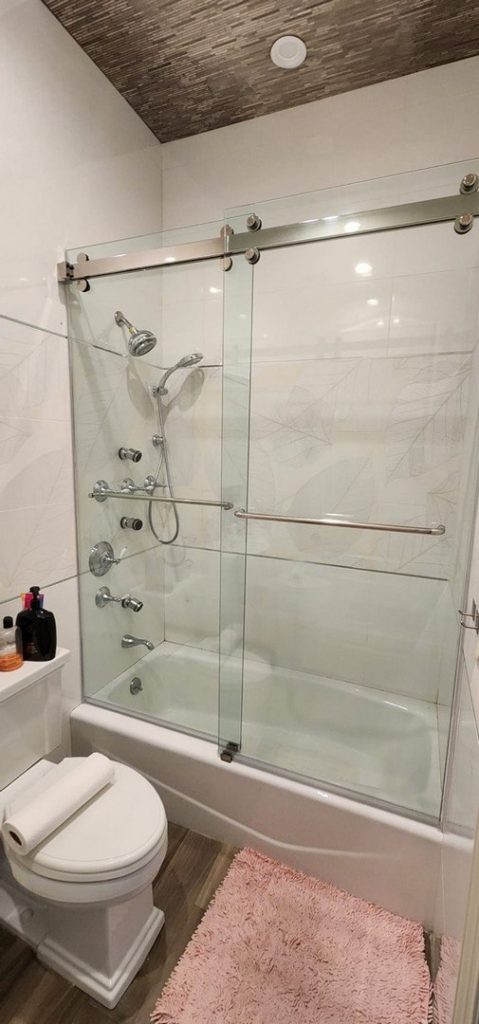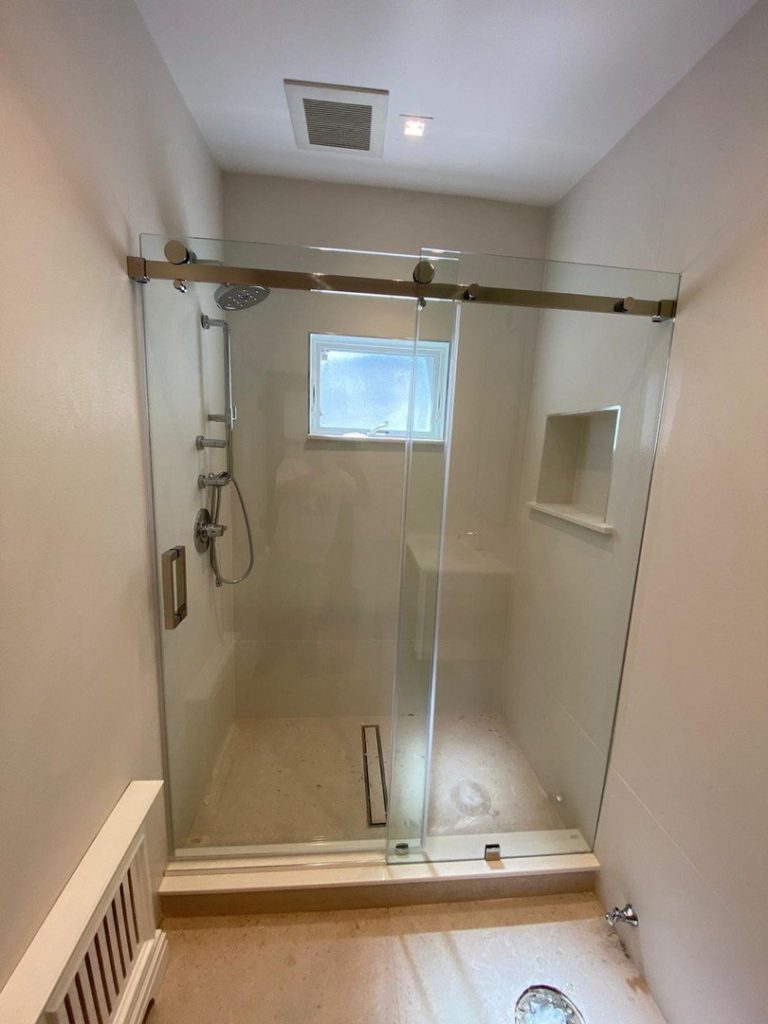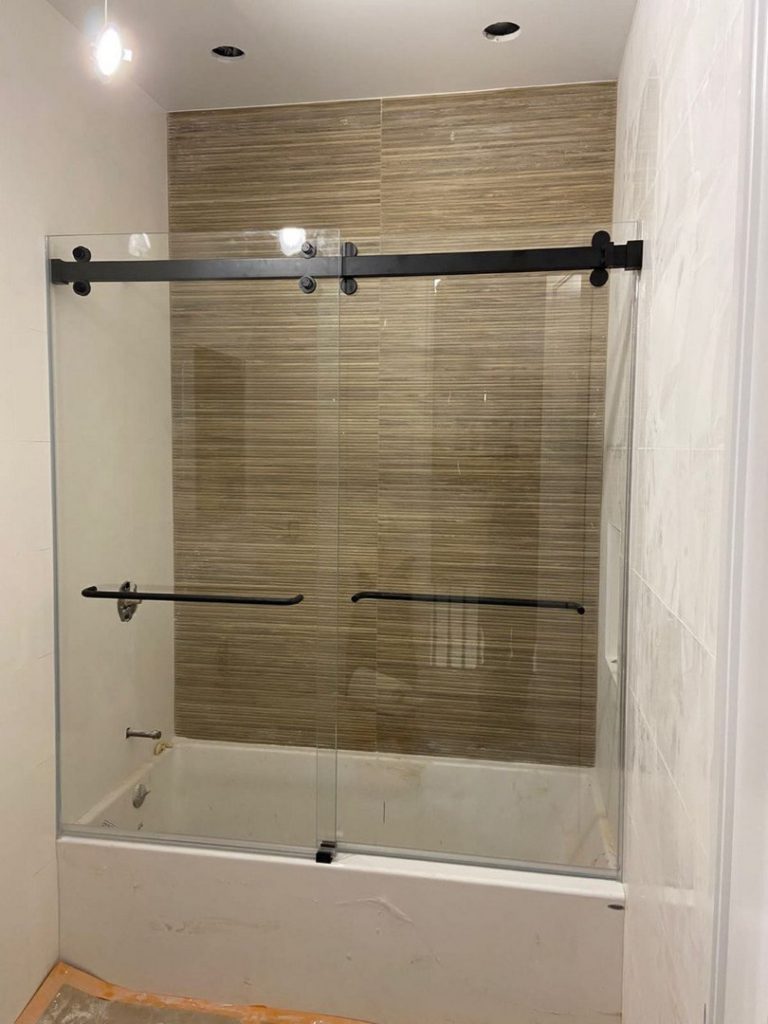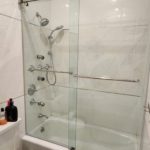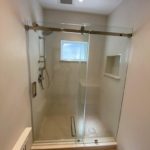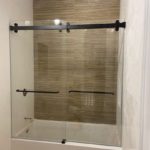Sliding glass doors
Sliding glass doors consists of large glass panels fitted into frames and are designed to glide horizontally along a track. This sliding mechanism allows for easy and smooth opening and closing, making them ideal for areas with limited space.
-
Sliding Glass Doors by Glass Around
Seamless Design, Trusted Quality
At Glass Around, we offer premium sliding glass doors crafted for exceptional style, durability, and functionality. With components from world-renowned manufacturers, our doors create a seamless connection between indoor and outdoor spaces while enhancing natural light, energy efficiency, and aesthetics.
Key Features
🌟 Effortless Operation
Our sliding doors are equipped with precision-engineered tracks and rollers from Dormakaba and C.R. Laurence (CRL), ensuring smooth and silent performance.🔥 Energy Efficiency
– Low-E insulated glass from Guardian Glass, Pilkington, and Vitro Architectural Glass minimizes heat transfer and optimizes energy savings.
– Advanced thermal break technology and weather stripping ensure superior insulation and draft protection.
🔒 Enhanced Security
– Multi-point locking systems by ASSA ABLOY and Hoppe provide reliable protection.
– Safety glass options, including tempered and laminated glass, meet or exceed industry safety standards.
🎨 Custom Configurations
Available in two-panel, three-panel, or multi-slide systems, our sliding doors are tailored to your space. High-quality materials such as aluminum, vinyl, or wood-clad aluminum combine strength with aesthetic appeal.
Premium Customization Options
Feature Details Glass Clear, frosted, tinted, or Low-E insulated glass from Guardian Glass, Pilkington, and Vitro Architectural Glass. Frames Aluminum, vinyl, fiberglass, or wood-clad aluminum by Reynaers, Alumil, or Aluminco. Locks Multi-point locking systems by Hoppe or ASSA ABLOY for enhanced security. Finishes Powder-coated or anodized finishes, or custom woodgrain for a premium look. Mechanisms Tracks and rollers from Dormakaba and C.R. Laurence for effortless gliding.
Perfect for Any Space
🏠 Residential
Seamlessly connect living areas to patios or balconies, flooding your home with natural light.🏢 Commercial
Enhance office spaces, storefronts, or restaurants with sleek, modern sliding doors.🏖 Hospitality
Create a luxurious experience in hotels, resorts, and villas with premium sliding glass systems.
Why Choose Glass Around?
✅ Premium Components
We partner with leading manufacturers like Guardian Glass, Pilkington, Vitro Architectural Glass, Dormakaba, C.R. Laurence, Reynaers, and Alumil to ensure the highest quality.✅ Custom Solutions
Our team tailors every sliding door to your exact specifications, from dimensions to finishes and glass options.✅ Expert Installation
Our specialists provide flawless alignment, secure mounting, and smooth operation to guarantee long-lasting performance.
📞 Upgrade Your Space with Glass Around
Transform your home or business with sliding glass doors built for style, efficiency, and durability. Contact us today to start your project.📍 Location: 7 Beach St, Staten Island, NY 10304
📧 Email: info@glassaround.com
📞 Call us: +1 929 235 12 33
🌐 Visit us: www.glassaround.com -
- Glass Thickness:
- Sliding glass doors typically range in thickness from 6mm (1/4 inch) to 10mm (3/8 inch) or even 12mm (1/2 inch) for frameless doors.
- Thicker glass provides more sturdiness and durability.
- Glass Types:
- Tempered Glass: Most commonly used due to its safety properties. Tempering increases its strength and shattering resistance.
- Clear Glass: Standard transparent glass that allows light to pass through, giving a spacious feel to the area.
- Frosted Glass: Sandblasted or acid-etched to create a frosted, translucent appearance, providing privacy.
- Textured Glass: Various patterns or textures can be added to the glass for both aesthetics and privacy.
- Frame Materials:
- Aluminum: Commonly used due to its lightweight, durability, and resistance to corrosion.
- Stainless Steel: Provides a sleek, modern look and is highly resistant to rust and corrosion.
- Sliding Mechanism:
Sliding glass doors use rollers or ball bearings for smooth and quiet operation during opening and closing.
- Handles and Locks:
Handles and locks are typically made of stainless steel or other durable materials to ensure security and ease of use.
- Seals and Weatherstripping:
Neoprene or vinyl seals are used to provide weatherproofing and prevent air and water infiltration.
- Threshold:
Sliding doors have a low-profile threshold, often made of aluminum, for ease of entry and to comply with accessibility standards.
- Energy Efficiency:
Some sliding glass doors have energy-efficient features like Low-E coatings to reduce heat transfer and improve insulation.
- Safety Features:
Safety features can include shatterproof glass and impact-resistant designs to enhance overall safety.
- Size and Customization:
Sliding glass doors are available in various sizes and can often be customized to fit specific openings.
Considering these technical aspects when selecting sliding glass doors is crucial to ensure the right fit, durability, safety, and functionality for your space.
